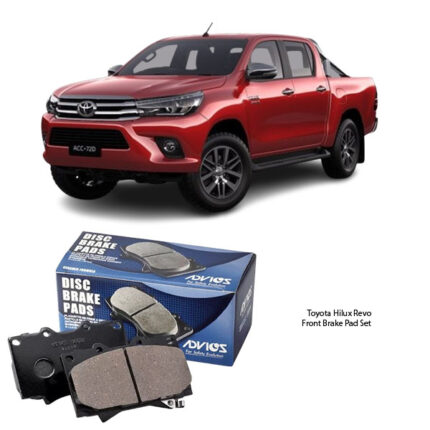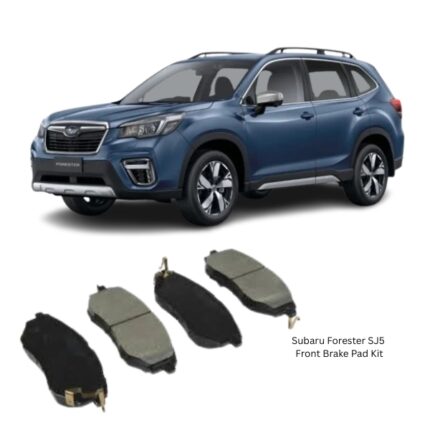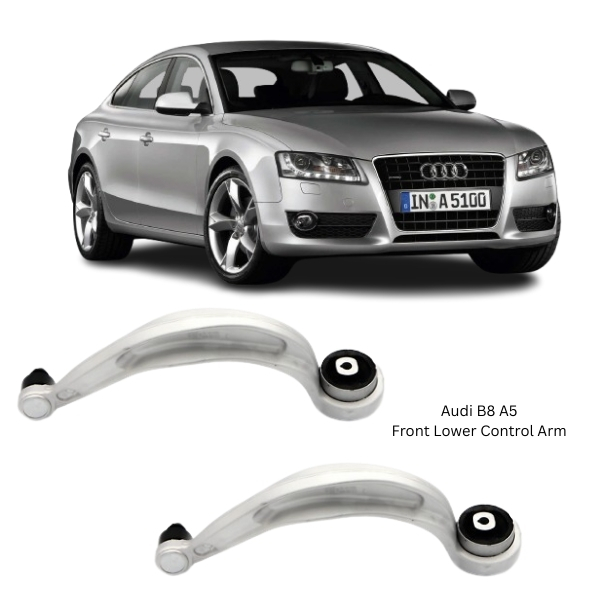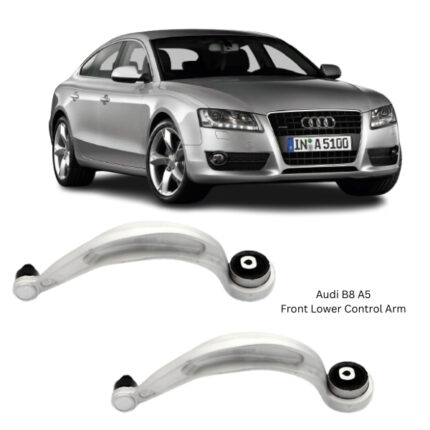Get Audi B8 A5 Front Lower Control Arm 8K0407693S in Kenya
The front lower control arm is one of the most essential components in a vehicle’s suspension system, serving as a critical link between the chassis and the wheels. Although it might appear as a simple metal part at first glance, its function is central to the overall safety, stability, and driving comfort of any car. Understanding the role, design, and importance of the front lower control arm provides insight into why it is such a vital part of modern automotive engineering.
1. Function and Purpose
At its core, the front lower control arm acts as a pivoting connection between the wheel hub assembly and the vehicle’s frame. It provides the necessary support to keep the wheel aligned while allowing for up-and-down movement as the suspension absorbs shocks from the road. Without the control arm, the wheels would not remain firmly in position, and the vehicle would lose stability, making safe driving nearly impossible.
The primary purposes of the front lower control arm include:
-
Maintaining alignment: It ensures that the wheels remain aligned to the chassis, contributing to consistent steering and reduced tire wear.
-
Enabling movement: The control arm allows the wheels to move vertically when encountering bumps, potholes, or uneven terrain, absorbing road impacts.
-
Supporting suspension geometry: It helps maintain the proper angles of the suspension system, which is vital for traction, cornering, and overall handling.
2. Construction and Design
Front lower control arms are usually constructed from high-strength steel, forged aluminum, or cast iron, depending on the vehicle’s design and intended use. The choice of material affects the balance between weight, durability, and performance. For example:
-
Steel is common in standard vehicles, offering strength and cost efficiency.
-
Aluminum is lighter and often used in performance or luxury vehicles to reduce overall vehicle weight and improve fuel efficiency.
-
Cast iron may be found in older or heavy-duty vehicles, valued for durability and toughness.
The arm itself typically has a wishbone or A-shaped design (commonly referred to as an “A-arm”), with one end connecting to the frame via bushings and the other attaching to the steering knuckle via a ball joint. This structure provides both strength and flexibility.
3. Key Components
A front lower control arm is not a standalone piece of metal—it works as part of a system with several key elements:
-
Control Arm Body – The main metal arm that provides structure and connection.
-
Bushings – Usually made of rubber or polyurethane, these are mounted at the chassis connection points to absorb vibration and reduce noise.
-
Ball Joint – Located at the outer end, this spherical joint allows for multi-directional movement, linking the control arm to the wheel hub and steering knuckle.
-
Mounting Points – Bolts and brackets that secure the arm to the frame.
Together, these elements ensure smooth wheel movement, effective shock absorption, and secure suspension performance.
4. Importance in Vehicle Safety and Performance
The condition of the front lower control arm directly affects driving safety. A worn or damaged control arm can cause:
-
Steering instability: Making the car pull to one side.
-
Uneven tire wear: From misalignment of the wheels.
-
Suspension noise: Such as clunking or knocking sounds when driving over bumps.
-
Poor handling: Reduced responsiveness during cornering or sudden maneuvers.
In extreme cases, a severely damaged control arm could fail, leading to a loss of control of the vehicle. This is why mechanics emphasize regular suspension inspections and timely replacement of worn control arms.
5. Signs of a Failing Front Lower Control Arm
Drivers should be alert to the following symptoms, which may indicate issues with the control arm or its components:
-
Unusual clunking or knocking sounds from the front suspension.
-
Vibrations felt in the steering wheel.
-
Steering that feels loose or unresponsive.
-
Vehicle drifting or pulling to one side.
-
Excessive tire wear patterns, especially on the inside or outside edges.
These warning signs typically arise when bushings crack, ball joints wear out, or the control arm itself bends due to impact.
6. Maintenance and Longevity
The lifespan of a front lower control arm depends on driving conditions, vehicle usage, and material quality. Generally, they can last 90,000 to 100,000 kilometers, but rough roads, aggressive driving, or frequent heavy loads can shorten their service life.
To maximize longevity:
-
Have suspension components inspected regularly during routine servicing.
-
Replace worn bushings and ball joints promptly instead of waiting for complete failure.
-
Avoid hitting curbs, potholes, or speed bumps at high speeds, which can bend the control arm.
7. Replacement and Repair
When a front lower control arm becomes damaged, replacement is usually the preferred solution rather than repair. This is because the arm is a precision-engineered safety component, and welding or reshaping compromises its integrity.
Replacement involves:
-
Lifting the vehicle and removing the wheel.
-
Disconnecting the ball joint from the steering knuckle.
-
Detaching the control arm from the chassis mounting points.
-
Installing a new control arm with fresh bushings and ball joints.
-
Aligning the wheels afterward to ensure proper suspension geometry.
Professional installation is strongly recommended, as improper replacement can affect safety and handling.
8. Types of Front Lower Control Arms
Control arms can vary depending on the suspension design:
-
Single-piece control arms: A solid A-shaped structure, common in many vehicles.
-
Multi-link arms: Found in advanced suspension systems, offering greater precision and comfort.
-
Adjustable control arms: Often used in performance or off-road vehicles, allowing for custom alignment and handling setups.
9. Role in Driving Comfort
Besides safety, the front lower control arm plays a big role in ride comfort. By absorbing road shocks and vibrations through its bushings, it prevents harsh jolts from reaching the cabin. This makes driving smoother and reduces fatigue during long journeys.
Follow us on Facebook for more parts.




